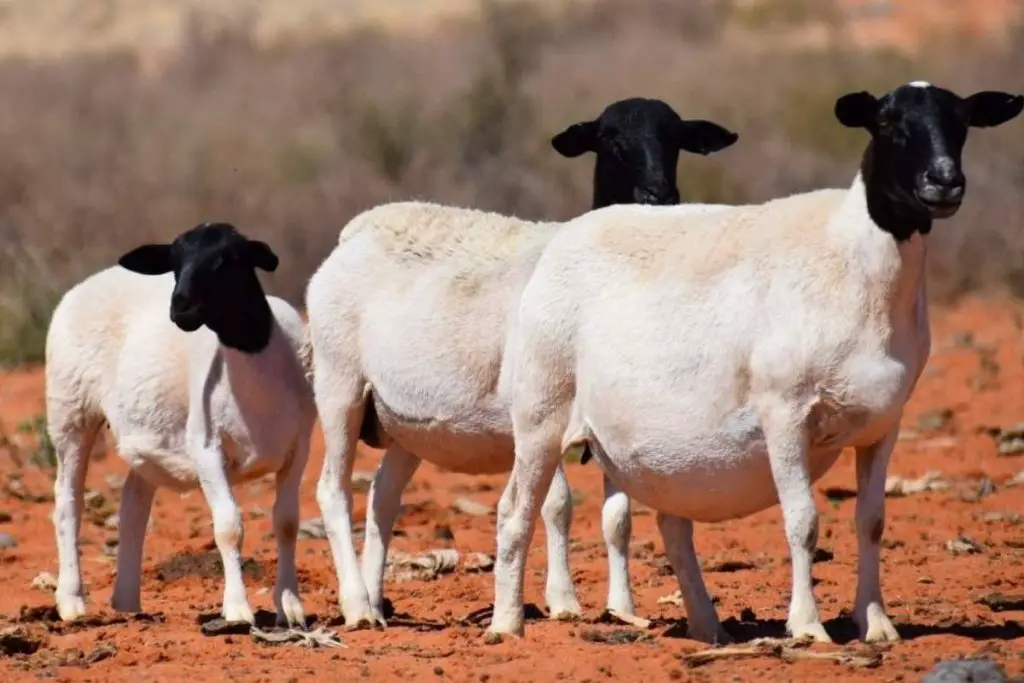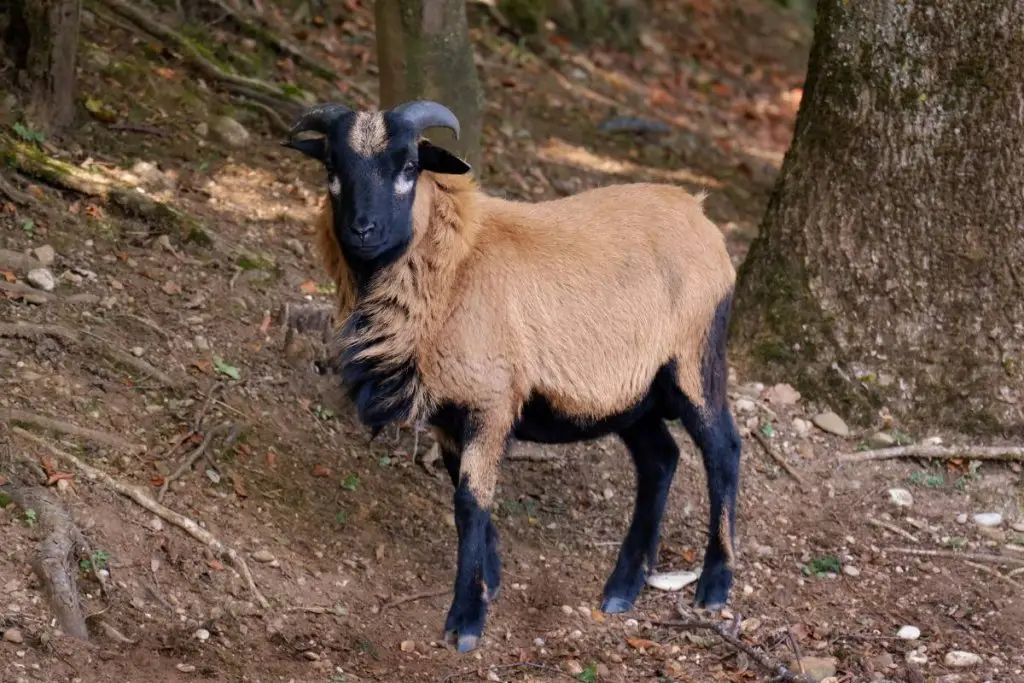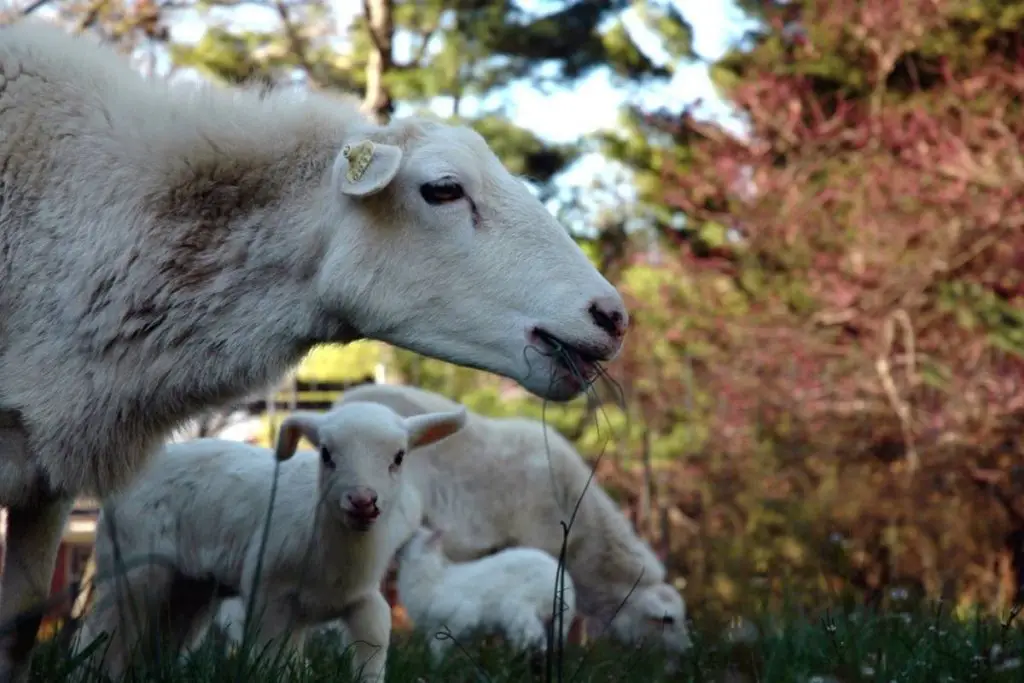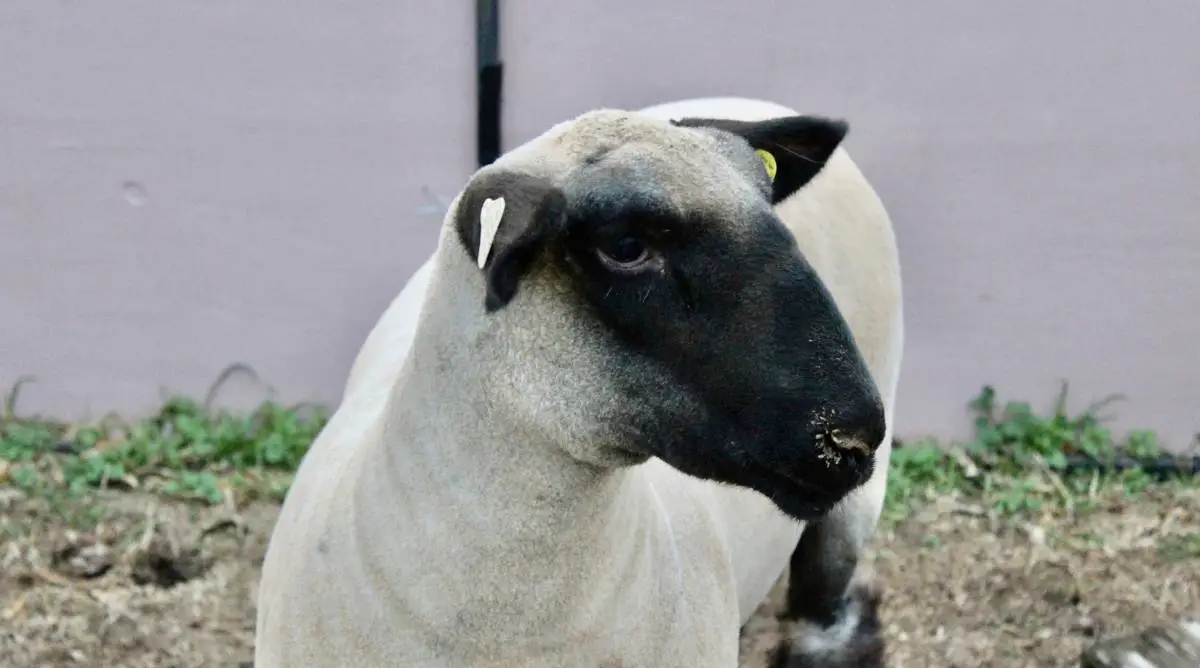While the stereotypical sheep is white and woolly, some of the largest commercial sheep operations in the world use hairy sheep instead of wooly sheep. Hair breeds, including the Royal White, American Blackbelly, and Katahdin, shed their hair rather than needing to be sheared.
Table of Contents
What are hairy sheep breeds?
Hairy sheep breeds have hair instead of wool.
Hair sheep breeds tend to be used for meat production because they are low-maintenance. They don’t need to be sheared because they shed their hair.
Hairy Sheep Breeds Vs. Wool Breeds

Hairy sheep have some advantages over woolly sheep, including:
- Lower maintenance costs because they don’t require shearing.
- More heat tolerant than wooled breeds.
- Less susceptible to parasites and hoof-rot disease.
- Often don’t require tail docking.
- Can be more affordable since they’re smaller in stature than wooled breeds.
- More profitable since there’s a year-round demand for meat.
- If you’re rearing sheep for meat, hair sheep typically produce a more mild flavor than wool sheep.
5 Hairy Sheep Breeds
American Blackbelly Sheep

American Blackbelly sheep have a gorgeous tan or brown coat with a black face, underbelly, legs, and ears. They sport eye-catching large horns. These sheep are small-to-medium size.
Sheep producers go for this sheep breed due to the following:
- High resistance to parasites and diseases
- Adaptability to hot and cold climates
- Year-round fertility
- Low maintenance costs (no shearing, docking, vaccinations, or deworming)
- Non-selective feeding
Katahdin
Katahdin were first bred by Michael Piel, a geneticist in Maine, United States.
Katahdin sheep are docile and medium-sized. Ewes weigh 120-160lbs, while the rams are 180-250lbs. Most are polled.
Katahdin exhibit a wide array of coat colors with varying fiber content.
Advantages of Katahdin sheep include:
- Hardiness and tolerance to parasites
- Efficient meat production ability
- Lean, well-muscled carcasses
- Fertility and exceptional mothering skills
- Large stature
- Adaptability
St Croix

The St Croix sheep is one of the earliest American breeds, originating in the Virgin Islands.
St Croix is a pure-white heritage breed, also referred to as the ‘Virgin Island White.’ However, some St Croix sheep are tan, brown, or black, while others are white with dark spots. Both sexes are polled.
St Croix sheep are renowned for their meat production and tolerance to parasites. They’re docile and calm, with good flocking instincts. The medium-sized sheep have average weights ranging between 150lbs (ewes) and 200lbs (rams).
St Croix are a popular hair sheep breed due to their:
- Low maintenance costs
- Adaptability to varied climates
- Excellent foraging capabilities
- Good milking ability
- Fly strike and hoof-rot resistance
- Ideal for crossbreeding
- Excellent mothering skills
- High lamb survival rates
Royal White
The Royal White s a pure white sheep breed developed in the US.
Royal White sheep were created in the 1990s by Wiliam Hoag after crossbreeding the St Croix and White Dorper. They are renowned for their excellent meat.
Royal White sheep are medium-sized, weighing 150lbs (ewes) to 250lbs (rams). Both sexes are polled.
The sheep’s tails contain fat, enabling them to endure harsh freezing conditions. Experts don’t recommend docking them, as their tails also provide energy during lactation.
Royal White sheep are becoming an increasingly popular breed of hair sheep due to the following characteristics:
- Excellent mothering abilities
- Low nutrient and maintenance requirements
- Superior-quality leather
- Easy handling
- Tolerance to heat
Blackhead Persian
The Blackhead Persian is a hardy hair sheep breed native to Somalia.
Over time, it crossed to the Caribbean, becoming especially popular in Brazil.
The sheep has a characteristic black head on a white body. Blackhead Persian sheep are well-known hair sheep bred for their meat. They’ve got a compact body, a fat rump (at the base of the tail), and short legs.
Blackhead Persian sheep are small to medium-sized, weighing 115lbs (ewes) to 150lbs (rams) upon maturity.
Blackhead Persian are renowned for their:
- Hardiness
- Adaptability to hot climates
- Milk production (ideal for cheese making)

